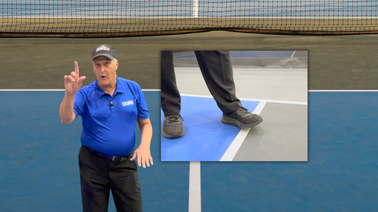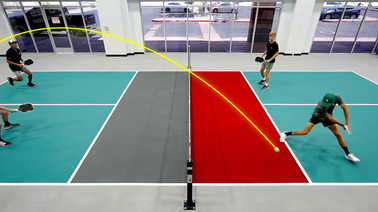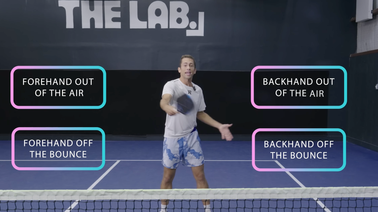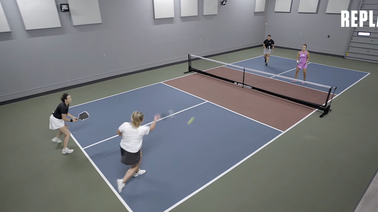
A Pro Coach Distilled a Year's Worth of Tips into One 7-Step Masterclass
These aren't exotic shots or niche strategies. These are the bread-and-butter techniques that separate players who plateau from players who keep climbing.
Tanner Tomassi just dropped a gem.
Over the past two years, he's created more than 750 pickleball videos. Some went absolutely viral. Others? Well, let's just say they didn't quite land. But here's the thing: instead of moving on, he decided to go back and recreate his seven most viral videos with everything he's learned since then.
The result is a masterclass in how to actually improve your game, whether you're just starting out or already crushing it at the advanced level.
The Real Story: Evolution Over Perfection
What makes this video different from your typical "10 tips to improve" content is the underlying philosophy.
Tanner isn't pretending he had all the answers two years ago. He's showing you that pickleball is a game where even the people creating content about it are constantly learning, constantly refining, constantly getting better.
That's actually refreshing in a space that can sometimes feel like everyone's got it all figured out.
The seven videos he recreated cover the fundamentals that trip up most players, regardless of skill level. These aren't exotic shots or niche strategies. These are the bread-and-butter techniques that separate players who plateau from players who keep climbing.
1. Top 3 Serving Mistakes Killing Your Game
Let's start with the serve, because honestly, it's where everything begins. Tanner identifies three critical mistakes that amateur players make almost universally.
Mistake one: Standing completely sideways. When you're lined up to serve with your shoulders and hips facing perpendicular to the court, you're basically handcuffing yourself. You can only generate power from your arm, which means you're leaving serious velocity on the table. Instead, point your lead foot toward where you want the ball to go. Your shoulders and hips will naturally turn to your target, and suddenly you've got your whole body working for you.
Mistake two: Forgetting about body weight. This is where a lot of players miss the mark. The serve isn't just an arm movement. It's a full-body motion. You need to rock back, engage your back leg, and drive through the court. Compare that to just standing there and trying to muscle it with your arm alone. The difference in power is night and day.
Mistake three: Contact point. Where you actually strike the ball matters way more than most people think. Let your arm rest naturally at your side, get into an athletic stance, and then reach. That's your sweet spot. Too far back or too high, and you lose the ability to get behind the ball properly.
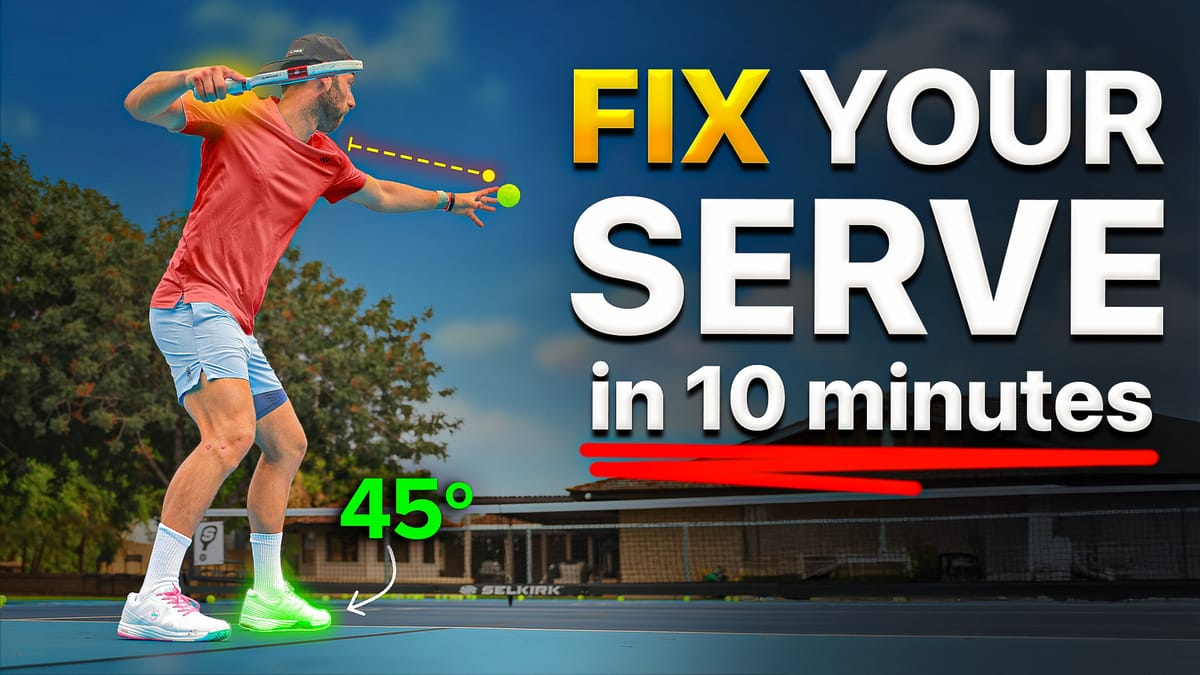
2. How to Stop Your Dinks from Popping Up
The dink is pickleball's most important shot, and it's also where a lot of players develop bad habits early on. Tanner breaks this down into three actionable pieces.
- First, think of your dink as a push, not a hit. This is a mindset shift. When you're at the net, you're not doing a mini tennis stroke. You're pushing. Imagine you have two balls stacked on your paddle, and you're pushing through both of them rather than flicking at one. Your wrist stays locked. You're extending through the shot, not flicking.
- Second, reach to your opponent with a closed paddle face. An open paddle face sends the ball up. A closed paddle face keeps it down. If your paddle is angled properly and you simply reach toward your opponent, finishing out in front, the ball stays low and lands in the kitchen where it belongs.
- Third, and this is the mental game: let the ball hit you. Don't go to the ball. Have a smooth, gradual motion whether the ball is there or not. Most players see the ball coming and try to load up and attack it. That's when things go sideways. Stay low through the entire shot, keep your paddle out in front, and you'll have a perfect dink every time.

3. The WORST Shot in Pickleball (Drop Volley Mistake)
Here's where Tanner gets a little spicy. The drop volley, when executed poorly, is genuinely one of the worst shots you can hit in pickleball.
Picture this: you're at the kitchen line, your opponents are at the baseline, they hit a third shot drop to you. Instead of hitting it hard to keep them back, you get cute and try a drop volley into the kitchen. If it's not absolutely perfect, you've just handed your opponents a free ticket to the kitchen. You went from having the advantage to being back at neutral.
The only time a drop volley makes sense is if your opponent is hitting off their back foot from way behind the baseline. Otherwise? Apply pressure. Keep them back. Don't give away the advantage you've worked to earn.
4. How to Handle Heavy Slice Returns
Slice returns are annoying. They're finicky. They're designed to mess with your timing. But Tanner's got a system.
- You cannot short hop a slice. Right when the ball bounces is the worst time to hit it. Instead, let it reach its apex and start to decline. That's when it's moving slowest. Position your body back to wherever the ball bounces so you can get behind it with time to spare.
- Exaggerate getting underneath the ball. With slice, all that spin naturally pulls the ball down quicker. You want to pretend you're digging with a shovel. Get low under the ball. That's crucial for handling slice properly.
- Here's the secret. If slice is coming at you and you want to skip all the technical stuff, just drive the ball at about 70% power. Your opponents will volley back the next one, which completely eliminates the slice. Slice is finicky and touchy. You can just drive that spin right off. Just be careful and drive a little higher than normal.
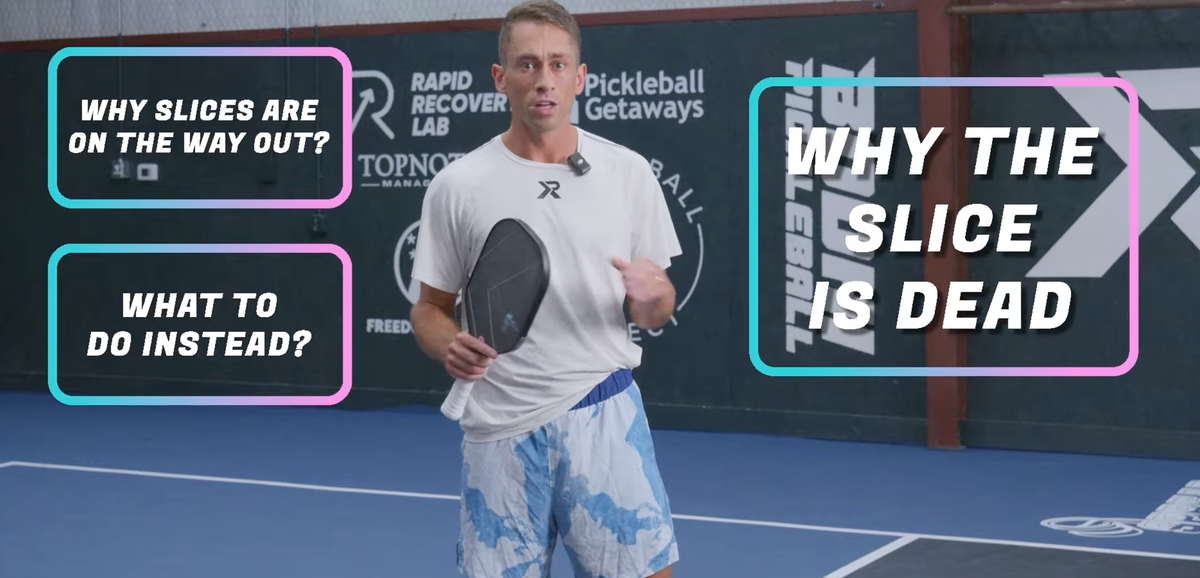
5. How to Hit a Backhand Flick Like the Pros
The backhand flick has a reputation for being one of pickleball's hardest shots. Tanner says it's actually way simpler than people think.
Start with footwork. Turn your feet a little sideways so you can engage your entire body, your obliques, your abs. If your feet are square, you're only using your arm, which feels awkward. Turn sideways and suddenly you can get everything into it.
Second: positioning. After you hit a good aggressive dink that you think your opponent will pop up, lean in and wait. Your paddle head should be down and your elbow up. The mistake most players make is hitting a good dink, standing there, and then reaching all in one motion when the pop-up comes. You need to already be out in front.
Third: the actual striking motion. It's like throwing a Frisbee upside down. Look at your wrist. You're going through the ball, not over it. That's the whole thing.
6. How Pros Defend Against Attacks at the Kitchen
This is a positioning lesson disguised as a defensive strategy. When you know an attack is coming, what do you do?
The second you see a dead ball was hit, take one or two steps back behind the line. This gives you so much space and time to react to the opponent's attack. Instead of guessing which way it's coming, that three feet of distance allows you to read and attack or read and reset their shot. It's a game changer that most players completely overlook.
Tanner demonstrates this with a partner, showing how backing up gives you the ability to step in, read the shot, and attack it. If you stay on the line, you're basically hoping for the best.
7. How to Hit a Forehand Drive with Topspin
The forehand drive with topspin is a power shot that requires three simple steps.
Step one: never hit this shot when you're stationary. As the ball approaches, you want to be stepping into it with your lead foot. That body weight transfer gives you extra force beyond just your arm.
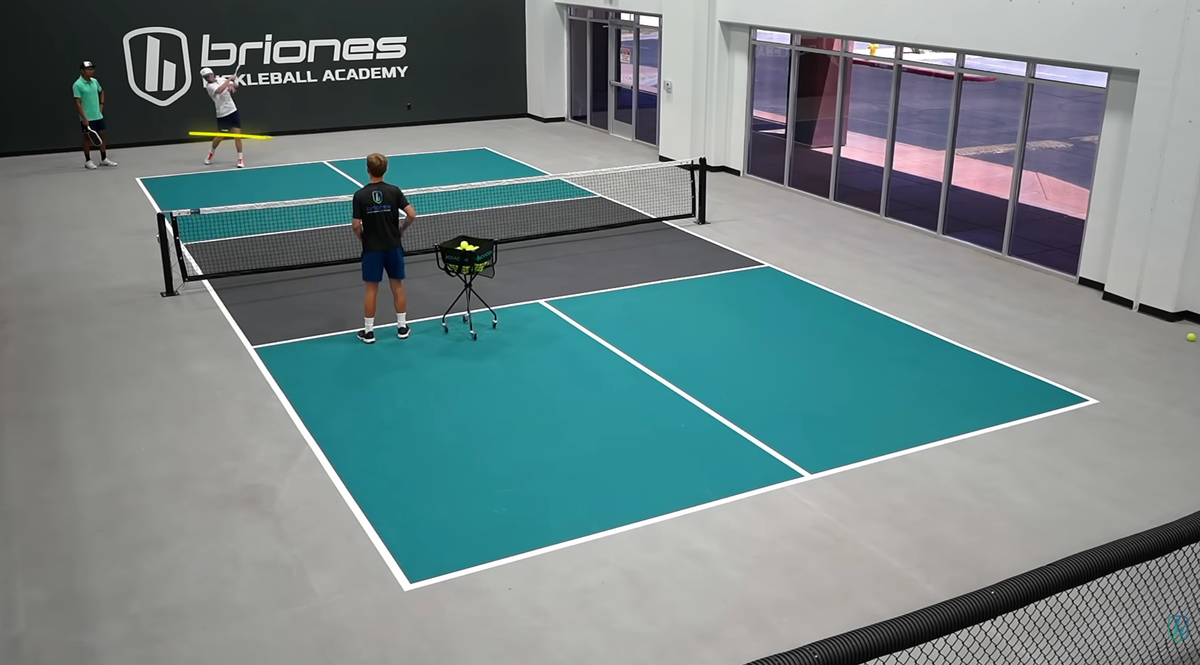
Step two: your paddle tip should be down. Swing from low to high and finish over your shoulder like you're answering the phone. The mistake players make is having their paddle sideways or finishing over their shoulder without that low-to-high motion. You need the paddle down and that upward swing.
Step three: point at the ball with your off hand. This gets your shoulders involved and helps with power generation. You'd be amazed how often players swing without pointing, which just looks awkward. Point at the ball, keep your arm close to your paddle, and boom. You've got a proper forehand drive with topspin.
The Bigger Picture: Why This Matters
What Tanner's really doing here is showing that pickleball improvement isn't about learning new tricks. It's about mastering the fundamentals and understanding why they work. These seven techniques are the foundation that everything else is built on.
If you're struggling to break through a plateau, chances are one of these seven areas is where you're leaking points. The good news? They're all fixable with focused practice and the right mental approach.
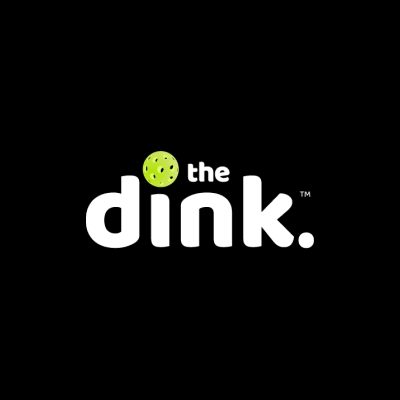
Love Pickleball? Join 100k+ readers for free weekly tips, news & gear deals.
Subscribe to The DinkGet 15% off pickleball gear at Midwest Raquet Sports






